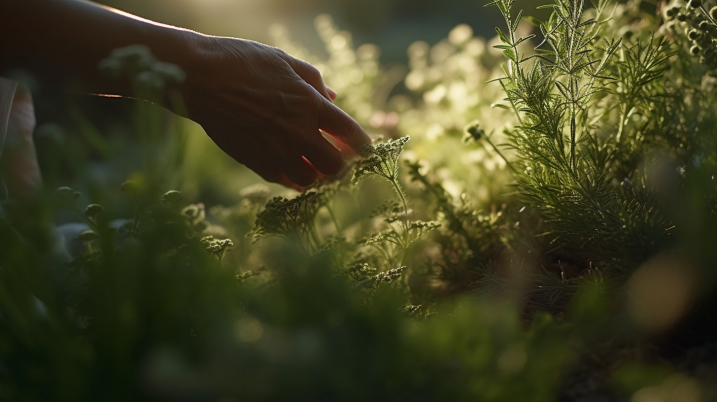
Have you ever considered growing your own medicinal herbs but weren’t sure where to start? Look no further! In this beginner’s guide, we will explore the fascinating world of growing medicinal herbs and provide you with essential tips and techniques to help you get started. Whether you have a spacious garden or just a tiny balcony, this article will equip you with the knowledge and confidence to cultivate your very own healing garden. Embark on this exciting journey with us, as we uncover the secrets of growing medicinal herbs and discover the multitude of benefits they can bring to your well-being.
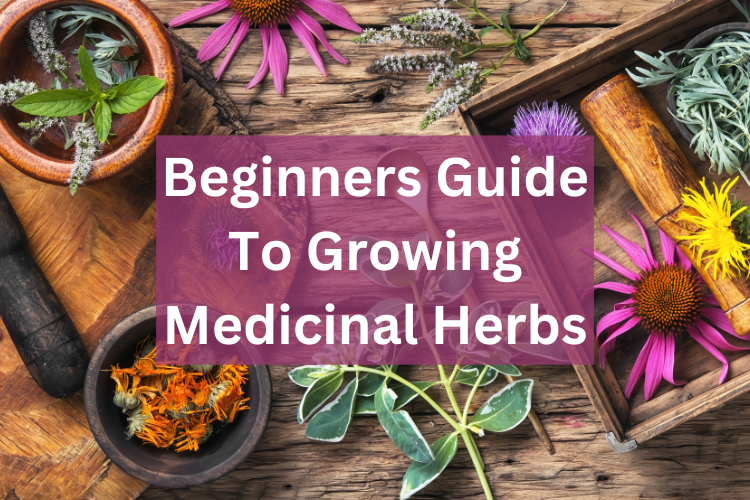
Choosing Medicinal Herbs
When it comes to growing medicinal herbs, the first step is to choose the right ones for your needs. There is a wide variety of medicinal herbs available, each with its unique health benefits. To start, it’s essential to research different medicinal herbs to understand their properties and potential uses. This will help you determine which herbs align with your interests and health goals.
Researching Medicinal Herbs
To make an informed decision, take the time to research the medicinal herbs you are interested in growing. Look for information on their growing conditions, preferred climate, and any specific care requirements they may have. You’ll also want to learn about the potential health benefits and uses of each herb. The more you know about the herbs you plan to grow, the better prepared you’ll be to care for them and use them effectively.
Considering Climate and Growing Conditions
Before you start planting medicinal herbs, consider the climate and growing conditions in your area. Some herbs thrive in specific climates, while others are more adaptable. Take into account factors such as temperature, sunlight, and rainfall. Check which herbs are suited to your climate zone and whether they require full sun or partial shade. By choosing herbs that are compatible with your climate and growing conditions, you’ll give them a better chance of thriving.
Assessing Space and Resources
Another crucial aspect to consider is the amount of space and resources you have available for growing medicinal herbs. Evaluate your garden or available growing area and determine how much space you can allocate to herb cultivation. Additionally, take stock of the resources you have, such as water supply and gardening tools.
Preparing the Growing Space
Once you have chosen your medicinal herbs and assessed the growing conditions, it’s time to prepare the growing space. Proper preparation is vital to ensure the success of your herbs.
Clearing the Area
Start by clearing the area where you plan to grow your medicinal herbs. Remove any weeds, rocks, or debris that might hinder the growth of your plants. This will provide a clean slate for your herbs to thrive.
Testing Soil Quality
Knowing the quality of your soil is essential for cultivating healthy medicinal herbs. Conduct a soil test to determine its pH level and nutrient content. A professional soil test kit or local agricultural extension office can help you assess the soil. Based on the test results, you can determine if any amendments are necessary to create the optimal conditions for your herbs.
Improving Soil Fertility
If your soil lacks essential nutrients, consider improving its fertility. Add organic matter, such as compost or well-rotted manure, to enrich the soil and enhance its ability to retain moisture. This will provide a nutrient-rich environment for your medicinal herbs to grow and thrive.
Starting from Seeds
Growing medicinal herbs from seeds can be a rewarding experience and allows you to cultivate a wide variety of herbs. Here’s how to get started.
Selecting Quality Seeds
When selecting seeds, opt for high-quality varieties from trusted sources. Look for seeds that are fresh and free from any signs of damage or disease. It’s also beneficial to choose organic seeds whenever possible to ensure the purity and quality of your plants.
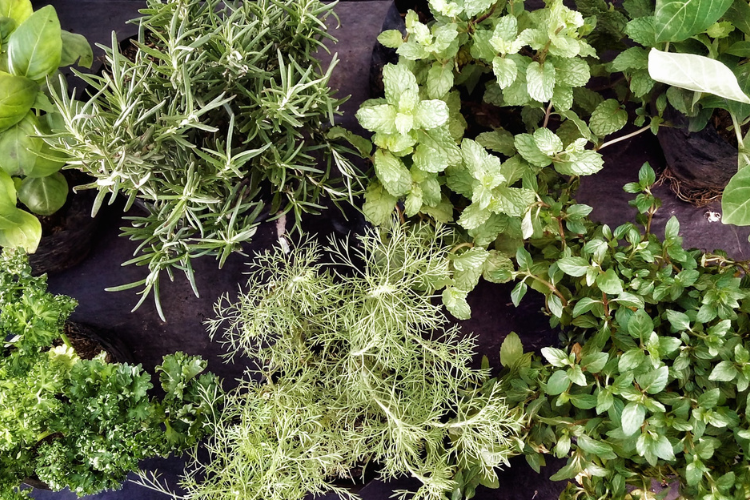
Creating a Seedling Tray
To successfully germinate your seeds, create a seedling tray. This can be a simple tray or container with drainage holes. Fill the tray with a seed-starting mix, which is a lightweight, well-draining soil blend specifically formulated for starting seeds.
Germinating Seeds
Follow the seed packet instructions for optimal germination. Typically, you’ll need to place the seeds on the surface of the seed-starting mix and lightly cover them with a thin layer of soil. Keep the tray in a warm location with indirect sunlight and maintain consistent moisture levels. With proper care and attention, your seeds will sprout, and you’ll have seedlings ready for transplanting.
Propagating from Cuttings
Another method of growing medicinal herbs is through propagation from cuttings. This method allows you to replicate plants with desirable traits and can be a quicker way to establish new plants.
Choosing Appropriate Plants for Cuttings
Select plants that are suitable for propagation through cuttings. Look for healthy, disease-free plants with vigorous growth. You’ll want to choose plants that have not flowered yet, as they will root more successfully.
Taking Cuttings
To take cuttings, use clean, sharp pruning shears. Snip off a 4-6 inch section of the stem just below a leaf node. Remove any lower leaves, leaving only a few at the top. This will encourage root development. Dip the cut end of the stem in a rooting hormone to enhance the chances of successful rooting.
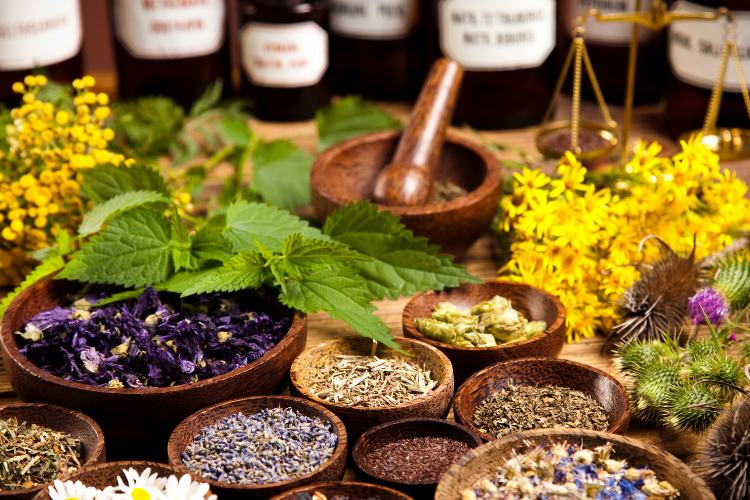
Rooting Cuttings in a Water or Soil Medium
There are two primary methods for rooting cuttings: water and soil. In the water method, place the cuttings in a container filled with water, ensuring that the lower nodes are submerged. Change the water regularly to prevent the growth of algae. Alternatively, you can root the cuttings directly in a well-draining soil medium, such as a mix of perlite and peat moss. Keep the soil moist but not overly wet, and provide the cuttings with the right amount of light and warmth for successful rooting.
Nurturing Seedlings
Once your seeds have sprouted or your cuttings have rooted, it’s time to nurture your seedlings and help them grow into mature plants.
Providing Adequate Light
Seedlings require adequate light to develop and grow strong. Place them in a location that receives at least 6-8 hours of bright, indirect sunlight per day. If natural light is insufficient, consider using grow lights to supplement the light needs of your seedlings.
Providing Optimal Temperature and Humidity
Maintaining optimal temperature and humidity levels is crucial for seedling growth. Most herbs prefer a temperature range between 60-75°F (15-24°C) during the day and slightly cooler temperatures at night. Avoid exposing your seedlings to sudden temperature fluctuations or drafts. Additionally, monitor humidity levels to prevent overly dry or humid conditions that can harm your plants.
Watering and Fertilizing Seedlings
Water your seedlings consistently, keeping the soil evenly moist but not waterlogged. Use a gentle watering method, such as a misting spray bottle, to avoid disturbing the tender seedlings. When it comes to fertilizing, start applying a diluted organic fertilizer once the seedlings have developed true leaves. Follow the product instructions for proper dosage and frequency.
Transplanting Seedlings
Once your seedlings have grown stronger and have a few sets of leaves, it’s time for transplanting.
Preparing Transplant Pots or Beds
Prepare transplant pots or beds with well-draining soil. Use pots or beds that provide enough space for your seedlings to grow and develop. Ensure the pots or beds have adequate drainage holes to prevent waterlogging.
Hardening Off Seedlings
Before transplanting your seedlings outdoors, they need to be gradually acclimatized to the outside environment. This process is known as hardening off and helps the plants adjust to outdoor conditions. Start by placing your seedlings outside for a few hours each day, gradually extending the time over a period of 7-10 days. Protect them from direct sunlight, wind, or extreme temperatures during this period.
Planting Seedlings
Once your seedlings have been hardened off, and the danger of frost has passed, it’s time to plant them in their final growing location. Dig a hole slightly larger than the root ball of the seedling and gently place it into the hole. Backfill with soil and lightly press it around the base. Water thoroughly after planting to encourage root establishment.
Caring for Medicinal Herbs
To ensure the health and vitality of your medicinal herbs, it’s important to provide ongoing care and maintenance.

Watering and Mulching
Proper watering is essential for the well-being of your herbs. Water them regularly, keeping the soil consistently moist but not overly wet. Mulching around the base of your plants can help retain soil moisture and suppress weed growth. Use organic mulch, such as straw or wood chips, to create a protective layer.
Pruning and Trimming
Pruning and trimming are necessary for maintaining the shape and health of your medicinal herbs. Regularly check your plants for any dead or damaged leaves and remove them promptly. Additionally, trimming back excessive growth can help maintain compact and healthier plants.
Managing Pests and Diseases
Keep a watchful eye for any signs of pests or diseases that may affect your medicinal herbs. Common pests like aphids, snails, or fungal diseases can impact plant health. Use natural pest control methods, such as introducing beneficial insects or using organic pest repellents, to keep these issues in check.
Harvesting Medicinal Herbs
The ultimate reward of growing medicinal herbs is being able to harvest and utilize their healing properties.
Identifying the Best Time for Harvesting
It’s crucial to harvest your medicinal herbs at the optimal time to maximize their potency and effectiveness. Learn about the specific harvesting times for each herb you grow. In most cases, harvesting herbs in the morning when the essential oils are at their highest concentration is recommended.
Using Proper Harvesting Techniques
To harvest your herbs, use clean and sharp pruning shears or scissors. Cut the stems just above a leaf node to encourage new growth. Be mindful not to overharvest and always leave enough foliage for the plant to continue growing.
Drying or Processing Herbs
Once harvested, it’s important to dry or process your herbs properly to preserve their quality. Different herbs may require specific drying methods, such as air drying, using a dehydrator, or hanging them in bunches. Follow the recommended techniques for each herb to ensure their therapeutic properties are maintained.
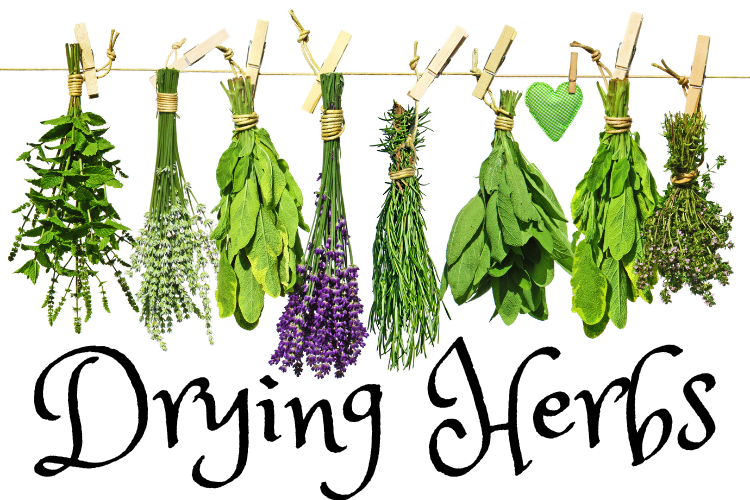
Storing Medicinal Herbs
Proper storage is essential to maintain the potency and longevity of your medicinal herbs.
Cleaning and Sorting Herbs
Before storing, clean your harvested herbs by removing any damaged or wilted parts. Gently wash them if necessary, ensuring they are thoroughly dry before storage. Sort the herbs based on the plant parts you intend to use, such as leaves, flowers, or roots.
Choosing Suitable Storage Containers
Opt for airtight containers made of dark glass or metal to prevent exposure to light, moisture, and air. Mason jars or dedicated herb storage containers are excellent choices. Label the containers with the herb name and the date of storage for easy identification.
Maintaining Proper Storage Conditions
Store your herbs in a cool, dry, and dark location, such as a pantry or cupboard. Avoid storing them near heat sources or in areas with fluctuating temperatures. Regularly check on your stored herbs to ensure they remain dry and free from any signs of spoilage or mold.
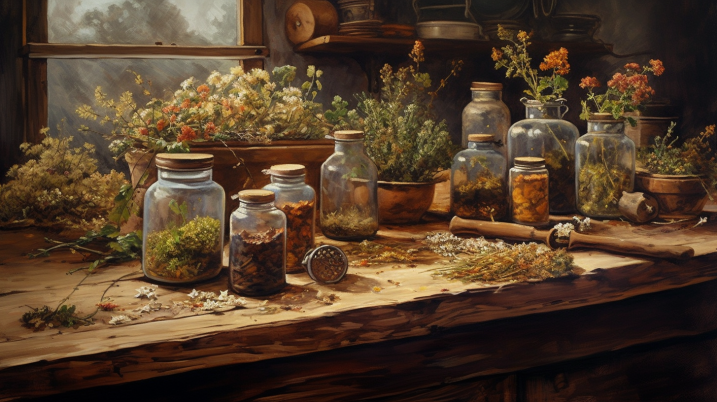
Common Medicinal Herbs for Beginners
If you’re new to growing medicinal herbs, here are some common herbs that are beginner-friendly and have various health benefits.
Peppermint
Peppermint is known for its refreshing aroma and digestive properties. It’s relatively easy to grow and thrives in full sun or partial shade. The leaves of peppermint can be used fresh or dried for teas, culinary dishes, or medicinal preparations.
Lavender
Lavender is prized for its lovely fragrance and calming effects. It prefers well-drained soil and full sun. The flowers can be harvested and used in sachets, bath products, or for culinary purposes.
Chamomile
Chamomile is well-known for its soothing properties and is often used in teas to promote relaxation and sleep. It grows well in a variety of conditions and can tolerate both full sun and partial shade. The flowers are typically harvested for medicinal use.
Echinacea
Echinacea is valued for its immune-boosting properties. It prefers full sun and well-drained soil. You can harvest the flower heads and roots for use in teas, tinctures, or extracts.
Calendula
Calendula, also known as pot marigold, is known for its vibrant flowers and skin-soothing properties. It thrives in full sun and well-drained soil. The edible flowers can be harvested and used in various topical preparations.
By following these steps and guidelines, you’ll be well on your way to successfully growing and nurturing your own medicinal herb garden. Enjoy the journey of discovering the healing power of nature’s herbs right at your fingertips. Happy herb gardening!


